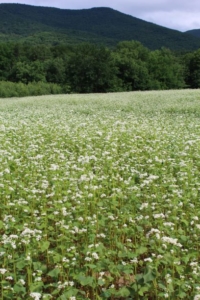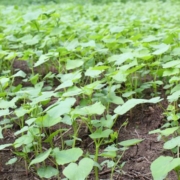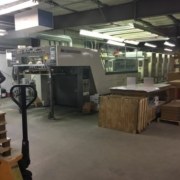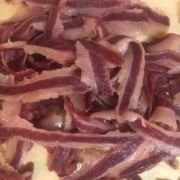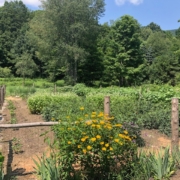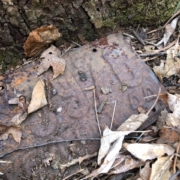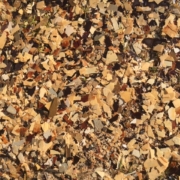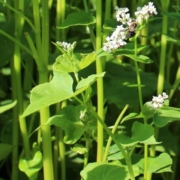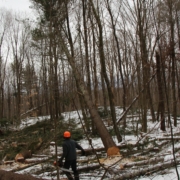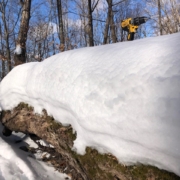A Buckwheat Planting for Soil Health
The people who founded this publication all come from the forestry world, a craft that’s a lovely mix of art and science and voodoo. One of the things that fascinates me about it is the lack of control. You never start with a blank canvas – even clearcuts have unpredictable seed banks – and so you’re managing a forest that has its own ideas about what and how it wants to grow. You’re also working on crazy timescales: 10 years, 30 years, 70 years, 100 years until you see the results of your inputs. The best foresters I know practice the craft like the best teachers I know. They evaluate, then meet the trees/pupils where they are. They help the site reach its maximum potential, which in different scenarios means different things. They balance economic productivity with wildlife habitat goals and ecosystem health.
This is all so different than traditional agriculture, where your goal is to grow a crop. Sure, you’re still worrying about ecosystem health, albeit in different ways. But where it comes to the ground you’re cultivating, you buy seed that’s already been selected for overachievers, you create as blank a canvas as you can each spring, and then you grow towards a goal of maximum yield. The whole endeavor ends within the span of a growing season.
These differences between Ag and Forestry feel both foreign and exhilarating to me. And I guess the part that appeals to me most is the ability to build and strengthen the soil, which is something you can only do very passively in the forest.
I’ve been working on the soil in two garden plots this year around my house, one for the family, one for the wild animals. The first step was to drag an old International Harvester two-bottom plow out of the hedgerow and use it to turn the earth. It’s 1930’s – 1940’s vintage, but it worked elegantly. This was followed by a pass with a set of disks of the same era, which did show some signs of their age. I ran into some snags in the garden plot – we’ll get to that in a different dispatch. But the food plot went better, and I was soon picking and piling clods. (Some are reading this and wondering why, if i’m interested in soil health, did i even plow at all? The simple answer to this fair question is that using a cool old piece of equipment with my three-year-old was more appealing than strapping on a backpack sprayer full of chemicals to kill sod. We’ll get into no-till systems in more depth in future content.)
When the field was prepped, I seeded it with buckwheat. The goal is to grow a crop for the soil, though crows and chipmunks (among other animals) love the seed, and it’s being munched by deer and cottontails as it grows, and it’s flowers will soon attract pollinators, especially honeybees. The plant’s roots loosen topsoil and the stems store phosphorous, which then gets released as it decomposes to be used by the next crop, which in this case will be a perennial clover mix.
Buckwheat is relatively easy to grow. Its big black seeds are highly visible and thus a breeze to broadcast. It’s not known to be particularly drought tolerant, but it weathered the drought we’re in like a champ. I used an old set of harrows to cover the seed. Knowing the implement was less than ideal, I overseeded to compensate. The charts call for 50 lb./ac; I probably seeded closer to 80 lb./ac. But seed’s cheap, so for a quarter-acre plot we’re talking maybe an extra $10 to overdo it.
You can see from the picture above that the results have been pretty good. Buckwheat grows fast, so in a few weeks from now it’ll flower, and a few weeks after that it’ll be ready to get turned in. If I were transplanting the next crop, I would cut and leave the buckwheat residue in the field to maintain soil stability and suppress weeds. But since I’m seeding, I’ll likely till it in. The downside to this is that I’ll be breaking up soil aggregates, the upside is that I’ll have a better surface for the clover to germinate in.
A real farmer across the road is rehabbing an old corn field with buckwheat this summer, too. Here’s a picture of his crop in as it breaks into flower. It smells 80 percent sweet and lovely and 20 percent dank and sour.
